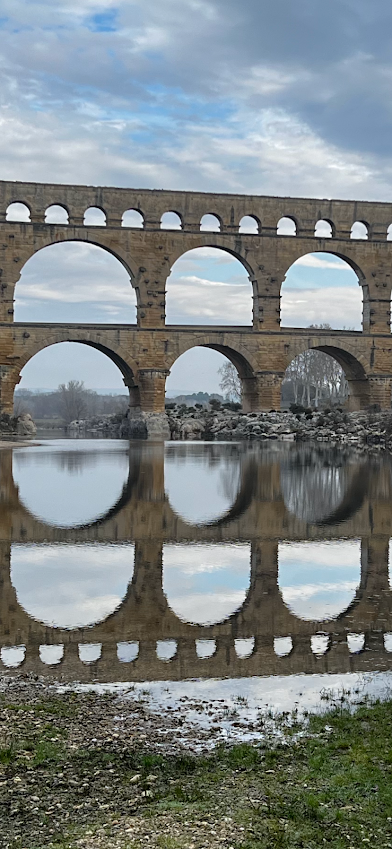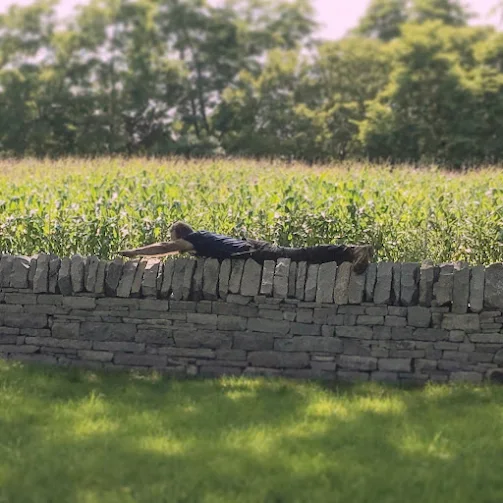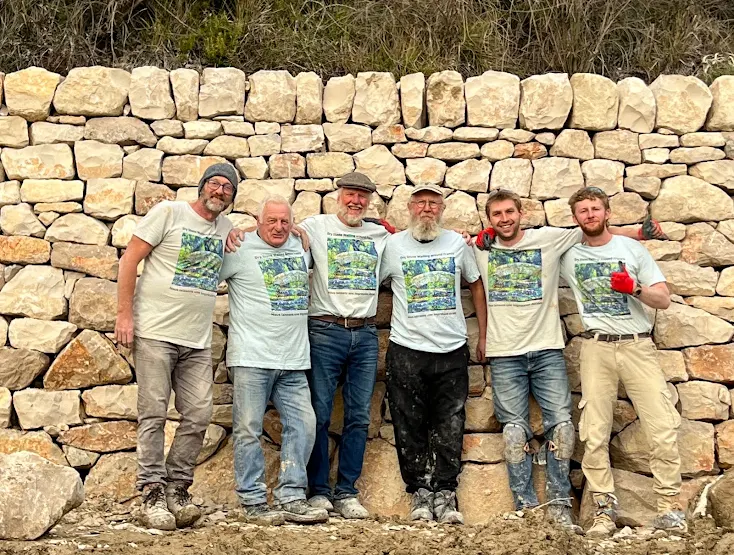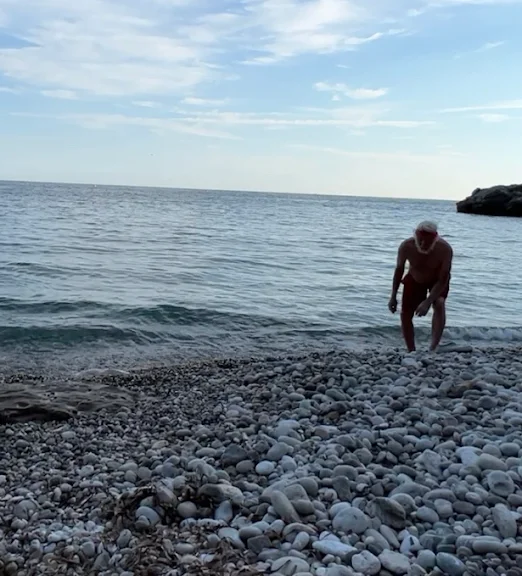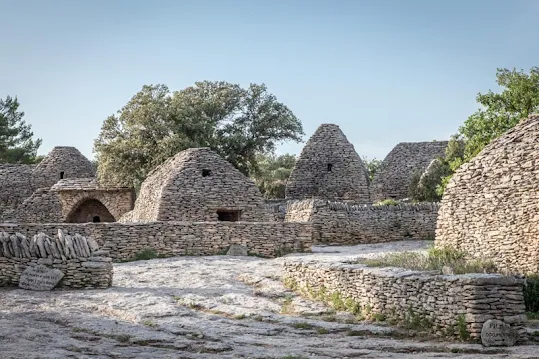Thursday, February 29, 2024
Wednesday, February 28, 2024
What happened here?
What happened here? Why did this stone monument fall apart? Did they skimp on concrete footings ? Did they not compact the soil before they started building? Maybe they should have built it in a better place, with better drainage? Maybe it was just built badly?
Now if they’d just engineered it a bit better, you know, like made the sarsens bigger, fatter, maybe the thing wouldn’t have fallen down so soon?
Tuesday, February 27, 2024
Rocks really know how to stay in shape
We can learn a lot from stones and rocks. They're hard, working. They are infinitely patient. You know where you stand with a them. They're friendly and easy going and if they don't like you they'll never tell you. Of course they might pinch you, or smash your foot, but generally they are not the first to start a confrontation.
We don't really know how hard stones have to be on themselves to stay in shape. Most of the time we only observe them relaxing doing nothing. But on occasion you might find one getting good on the freeze/thaw cycle. If they didn't, they'd be useless in a dry stone wall.
If they were the friable type ( all crumbly looking ) they will sweat a lot and in cold weather, they will start to fall apart. Thats why stones that haven't passed the freeze/thaw exercise program, will never be chosen for a job in a wall.
By the way that's how you can tell the difference between a stone and a rock. A rock is an unemployed stone.
Monday, February 26, 2024
Synchronicity and Serendipity
This video was created by Karina Sinclair for Landscape Ontario Trade magazine. I am thankful that some of the questions Carina asked me, allowed an opportunity to probe a little deeper into what dry stone walling (particularly faux ruins, fictional dwellings and landscape follies) is all about.
In the next few posts on Thinking With My Hands I hope to explore the connection between Synchronicity and Serendipity further.
Sunday, February 25, 2024
Stonescaping
I encourage StonEscaping
Stones escaping from their enemy : concrete products
Escaping from metal bars , rebar, tie pins, fixatives, adhesives, and threaded bolts.
Escaping from the machinery, the manufacturing the crushing burning, moulding, cookie-cutter, mechanized, landscraping industry
Escaping from the mad toxic bland manmade world of fabricated (so called) natural products
Escaping from the advancing army of bull dozers
Escaping from being dumped in holes and buried under the ground
Escaping being imprisoned in cement and concrete
Escaping from being plonked, abandoned, in meaningless artless clumps in public places
Escaping from being lined up at borders, from their parking-lot-in-life non-curb appeal fate .
Escaping to the freedom of a dry laid wall. Where all the parts are connected, yet free to move .
Escaping from the saw. The grinder. Escaping from the jaws of mass production, over engineering, monoculture, unimaginative, repetitive, mass produced carbon-emitting copies of real stone......
to become beautiful liberated stones in 'Walls Without Mortar'
Wednesday, February 21, 2024
Where do you get your straw from?
A waller often has to do magic with the material he finds himself having to work with. It’s like spinning gold out of straw. It seems impossible, and yet the "straw" is somehow slowly magically transformed into a work of solid gold . It happens so often. But I wonder do magicians ever fuss over what kind of special hats they are going to need to pull rabbits from, or might an Imp like Rumplestiltskin ever complain about the poor quality of moldy straw he’s expected to attempt to spin into gold, No I think that if you doing sorcery, its not at all dependent on having special grade material to begin with.
Yes there are different grades of straw But I assume it doesn’t make a difference what kind of straw you use, if magic is going to be applied to it, anyway. Isn’t it all of the same order of magic-natude ? And so what do you say to someone who comes along later and sees the solid magic you've created, and (as if it makes a difference) asks “Where do you get your straw from ?
Tuesday, February 20, 2024
Mortar Without Stones
When I used to do mortar masonry back in the 80's , we had a helper Eric who mixed all our mortar, wheel barrows of it. When we'd finish a chimney or a stone addition, and took away all the scaffolding, we'd often stand back and admire the stonework. I'd say something like "Look at all that beautiful stonework". He'd stand there for a while and then say "Look at all that beautiful mortar"
Monday, February 19, 2024
No Entry
I saw this when I was bicycling through Menton, France last month. Could they have walled this entrance in better so that they didn't need the No Entry sign too? It looks like it would stop a tank, but maybe someone thought it still looked a little under-engineered.
Sunday, February 18, 2024
The Picturesque
John Ruskin, on the necessity of properly anticipating the picturesque ruined look that comes only with time
"In architecture, the superinduced and accidental beauty is most commonly inconsistent with the preservation of original character, and the picturesque is therefore sought in ruin, and supposed to consist in decay. Whereas, even when so sought, it consists in the mere sublimity of the rents, or fractures, or stains, or vegetation, which assimilate the architecture with the work of Nature, and bestow upon it those circumstances of colour and form which are universally beloved by the eye of man.
So far as this is done, to the extinction of the true characters of the architecture, it is 'picturesque', and the artist who looks to the stem of the ivy instead of the shaft of the pillar, is carrying out in more daring freedom the debased sculptor's choice of the hair instead of the countenance. But so far as it can be rendered consistent with the inherent character, the picturesque or extraneous sublimity of architecture has just this of nobler function in it than that of any other object whatsoever, that it is an exponent of age, of that in which, as has been said, the greatest glory of the building consists; and, therefore, the external signs of this glory, having power and purpose greater than any belonging to their mere sensible beauty, may be considered as taking rank among pure and essential characters; so essential to my mind, that I think a building cannot be considered as in its prime until four or five centuries have passed over it; and that the entire choice and arrangement of its details should have reference to their appearance after that period, so that none should be admitted which would suffer material injury either by the weather-staining, or the mechanical degradation which the lapse of such a period would necessitate.
Seven Lamps of Architecture
Saturday, February 17, 2024
Discovering the Borie Story.
In the vicinity of the Village of the Bories at Gordes in Vaucluse, France we looked amidst the bushes for other unique structures. We found one that had not been restored to someone else’s concept of what it should or could have looked like .
Everyone has an interpretation of the original. But we wanted to see a site (inside and out) before it was all fixed up. We wanted to learn its story. Its good to be able to study deterioration that has not yet been repaired, to see for ourselves things like, how and why a section of wall failed, or how a strange shaped opening fell apart or why a thin lintel in the side opening hadn't cracked.
We learn more from seeing the mistakes of the original builder than the repairs of those who follow .
And are they all mistakes?, Really? OR, Were they the best answer for the circumstance, for the purpose perceived at the time. What was the time period the structure was determined to likely be of use.
It's difficult to surmise what happened if the evidence has been removed.
Questions like -
“Were there any long through stones or did they all break? Or did someone steal them?”
We enjoy sandcastles, not just seing them in their pristine state, but to delight in watching the sped-up processes of 'decay over time' – to watch how an arch collapses, or where incoming water erodes away the wall, first. We gradually learn to appreciate the inevitability of impermanence.
To every thing there is a season, and then, that season is over. We want to watch the seasons change. We want to take pleasure in that gradual eventuality.
It seems foolishness not to accept or take any pleasure in or at least be curious in that 'eventuality'. After all it is an essential component of existence, – the propensity of all things to move towards their expiry date.
We shall continue to build things to last, yes, but never suppose we can, or indeed think we can defy, or ever win over the forces of entropy.
A modern ( over engineered ?) building often makes, no concessions to the reality of beautiful decay.
Vernacular rustic humble aged structures seem better, more beautiful, for accepting their lot in the process of time.
Whether it is a humble dry stone hut, or a proud Roman aqueduct, the reality of its journey towards obsolescence need not be disguised.
We all start as adolescents and THEN ... we become obsolescent. The 'then' can be a long beautiful journey.
Friday, February 16, 2024
Doing Permanent Damage
I have always maintained that building a dry stone wall doesn't have to be a trade-off between beauty and sturdiness, and that both can be accomplished using even a random assortment of stones. It is possible to erect something that is built like a tank, but is a tank really beautiful. A wall, unless it is built in a war zone, doesn't have to look like a tank-barrier either, just the same way a house surely doesn't have to look like a bunker.
Thursday, February 15, 2024
Over Blown
The next question is why does this happen. Why can something as simple and as time honoured a craft as dry stone walling still slip into that trap of becoming overengineered? Why is it not obvious that instead of being a logical, frugal, and uncomplicated way of building, it often compels those who practice the craft to outdo or overdo or overshoot what is needed or what has been done before?
Wednesday, February 14, 2024
What is the point du gard?
In the next couple of Thinking With My Hands entries I'd like to investigate the meaning of the question..."Can a dry stone wall be over engineered ?"
See you tomorrow
Tuesday, February 13, 2024
What do you connect with
All of us
Are looking
To find a way of connecting.
We learn the principles of connection sometimes
By experimenting putting things together.
Connecting them like stones in a wall
And we learn
What works
And what doesn't.
And we make the connections.
And our wall takes on a pleasing form if is built right
And reveals the beauty of connectivity.
And fittingly,
we and others 'connect' with what we see.
Monday, February 12, 2024
Bucket List
We saw a lot of the things in France we wanted to see on our first Saturday off. Six of us crammed into the van and went off to explore The Pont du Gard and several dry stone Bories and Cabanes along the way. Everything was going well until the sliding door on the large van that Mark had rented got knocked off ! (Don't ask how)
After the initial shock and the resulting despair, we contemplated a grim scenario of us driving around the rest of the month without a door.
We did manage to eventually get the door back on enough to continue our travels ( Sean Adcock used a rock as a hammer to smash the van latch back into position, and the duck tape I bought came in handy for sealing the iffy door partially shut)
After that day's adventure, our van was renamed The Bucket List, since we knocked off several interesting things on that drive .
Sunday, February 11, 2024
The Fresh Impressionists
Saturday, February 10, 2024
The “Walled” is my Cloister
I’m not cloister-phobic.
Nor am I agoraphobic.
But I am more of a fan of enclosure,
Of feeling being walled-in.
The sense of place - being separate from all other places.
Separate, protected, cozy, containing everything I need in order to thrive.
I suffer from FOMO, and so to counteract the uncomfortableness of having too many choices, I choose to limit my self to what is nearest, convenient, more freely provided.
That which lies within my garden view, to complete my outdoor ‘rooms with a view’ .
What local stones are there around, to be used, or reused, or locally found? Can I work from the inside out ? Reaching over the wall, would be tricky no doubt. Or , if I worked from the outside in, behind me I’d cover any opening .
My cloister is a concentric series of cells, dry laid, self-contained, and all made quite well
Enclosures of joy, circling closer and closer. Rings within rings of cosmic attraction.
It can be round or square, well-furnished or bare, rustic or formal , uncommon or normal, a place of restraint, a ring of protection, no sense of stagnation , just peace and reflection .
What folly is this, what madness imagined , a fantasy walled , without the distraction? A containment , a border , prescribing the edges , made from the fieldstones found in the hedges.
Brimming and Rimming with tons of material, to create a sure haven to frame the ethereal.
Painting by @janegifford1
Friday, February 9, 2024
Choice Stones
The stones on the shore are all at various stages of completion.
Some have not yet become fully rounded .
Some are still too big. Most of them are at the uninteresting stage.
Other candidates have holes started in them but the holes don't yet go through to the other side .
They will be ready in a couple more years.
However a few stones along my beach walk are close to perfect, both in shape and smoothness - tumbled by the ocean and then cleverly left lying on the beach, waiting to catch my attention and then pick them up.
One candidate will stay in my hand as I walk,
my fingers exploring it's perfect smooth contours and colour, as I look for others, equally perfect in uniqueness.
There is no rush. No agenda.
My eyes go into neutral looking for these singular stones to bring home .
My focus is on nothing, in order to see the stones that are really something .
I bring back a dozen or so in my pockets every time I visit the beach
If I came here an infinite number of times , the sea no doubt , would have completed her timeless task of tumbling every single one of her stones into works of art and I will have had no choice but to have eventually chosen the entire shore of perfectly formed stones to carry back home with me .
Thursday, February 8, 2024
On not knowing the Bories stories
Coming across the remains of corbeled roofed (faux vault) dry laid stone shelters while working in France this winter was an inexplicably rewarding experience. There is a tantalizing mystery surrounding all these vernacular edifices which continues to linger long after you visit the Village of the Bories at Gordes in Vaucluse.
Augmenting this sense of delightful ‘unknowing’ is the fact that many of these rustic Bories or Cabanes seem to disguise themselves so well amidst the cedars and irregular rocky terrain we were exploring. It’s was as though they were playing a game of hide and seek with us. We stumbled upon one or two nestled into the landscape that only minutes ago we had walked by without seeing, on the winding double walled path we were following outside the actual village.
My heart was content to not know what my brain was needing to understand. What does it matter that you don’t know the why the when or the how? Finding these domed dwellings dotted over the rugged french countryside was a bit like finding curious looking shells on the beach. The lives of the inhabitants of the stoney huts we were exploring, their stories, their comings and goings, much like the sea creatures long gone from the shells they leave behind, are narratives we willingly allow to remain unimportant in comparison to the delight of discovering their beautiful abandoned crusty remains lying for the most part undisturbed by time and in uninhabited places.
These strange hollow 'dry stone' shells, unlike other crustaceans, are too big to pick up carry home in our pockets, but we take consolation in being able to take home many of our own personal impressions, and of course myriads of photos, to remind us of this enchanted place where these unusual limestone dwellings are gathered and seem to just bubble up to the surface.
Wednesday, February 7, 2024
The Van 'Go Between'
Between the essential and the fabricated,
Between pure Artistic Expression and imitation Artificial Intelligence,
Somewhere between these opposing influences there has to be opportunity to still be surprisingly creative.
Those of us who are looking to bring the art of walling back to earth again, continue to explore this middle road some call the Stone Zone.
Our desire is not just to fit stone's randomness into cute pleasing patterns, but help realize the improbable and the unpredictable.
In order to eliminate the unnatural elements of commercialism, and avoid the contrived manmade over-engineered look, we must steer our way around a digitalized reality that has represented a false concept of ‘virtual.’
We want to explore all stone's potential in this area, and not continue to replicate the predictably obvious.
If you enjoy the art of stone and hope to keep discovering the painterly/creative side of walling, if you like originality, not conformity, if you like your impressions to be real, that is, not contrived, diminished, filtered or visually manipulated, allow me to introduce you to the van Go Between
Somewhere between the pristine environment of priceless masterpieces (that few can afford), and the drab world of cheap reproductions that are neither natural, nor genuinely inspired , the ‘Go Between’ van turns out to be the ideal vehicle for still travelling creatively between the two worlds.
Tuesday, February 6, 2024
The walling game
It was 2011, in Inisheer, that Patrick McAfee and I first kicked around the idea of developing a board game that incorporated the principles of dry stone walling. Just recently I had more opportunity to create an actual playable version of the game, based on ideas BEM Sean Adcock and I discussed over dinner, while we were in France with several other skilled wallers doing a project near Nice.
We experimented with various versions of the game. The one in the photo involved replicating an Irish wedge wall. The rules were purposely kept simple. Each player picked out 5 pieces of about 100 cardboard shapes I'd previously cut out and placed in a bag so that no one knew what they were getting. A turn consisted of playing a piece on the table and picking a new piece from the bag until all the pieces were used. You weren't allowed to see the opponents pieces.
Shapes put down by a player had to be placed in a vertical orientation and had to touch at least two other cardboard 'stones'. A point was scored if you could fit a piece down so that it was touching three other stones. Two points scored if you could fit a shape so that it touched four stones, and so on.
There was a lot of other rules we considered and a lot of ideas played around with to make the game less dependant on having an arbitrator or "what have you" to determine whether pieces were on the proper vertical axis or actually touching its three neighbours.
The game still needs developing and the rules of the game definitely needs improving because Sean was winning most of the games I played him.

















